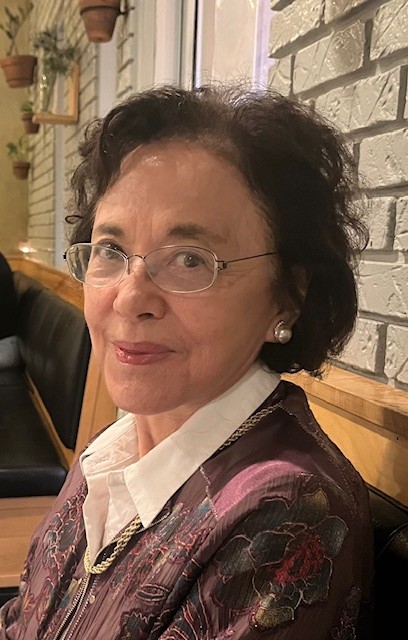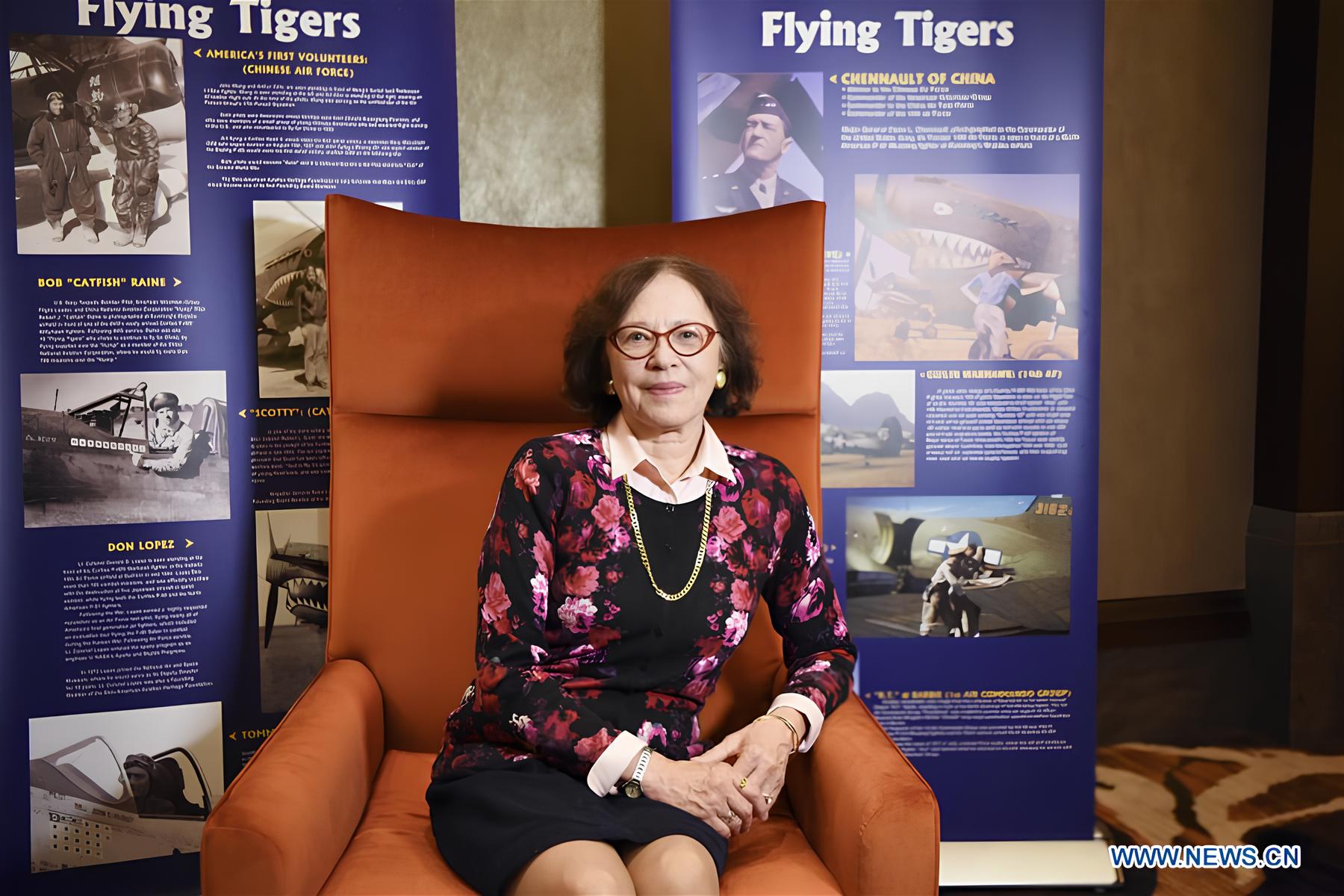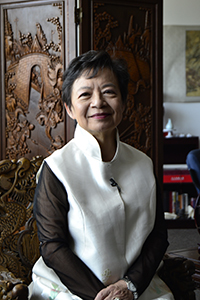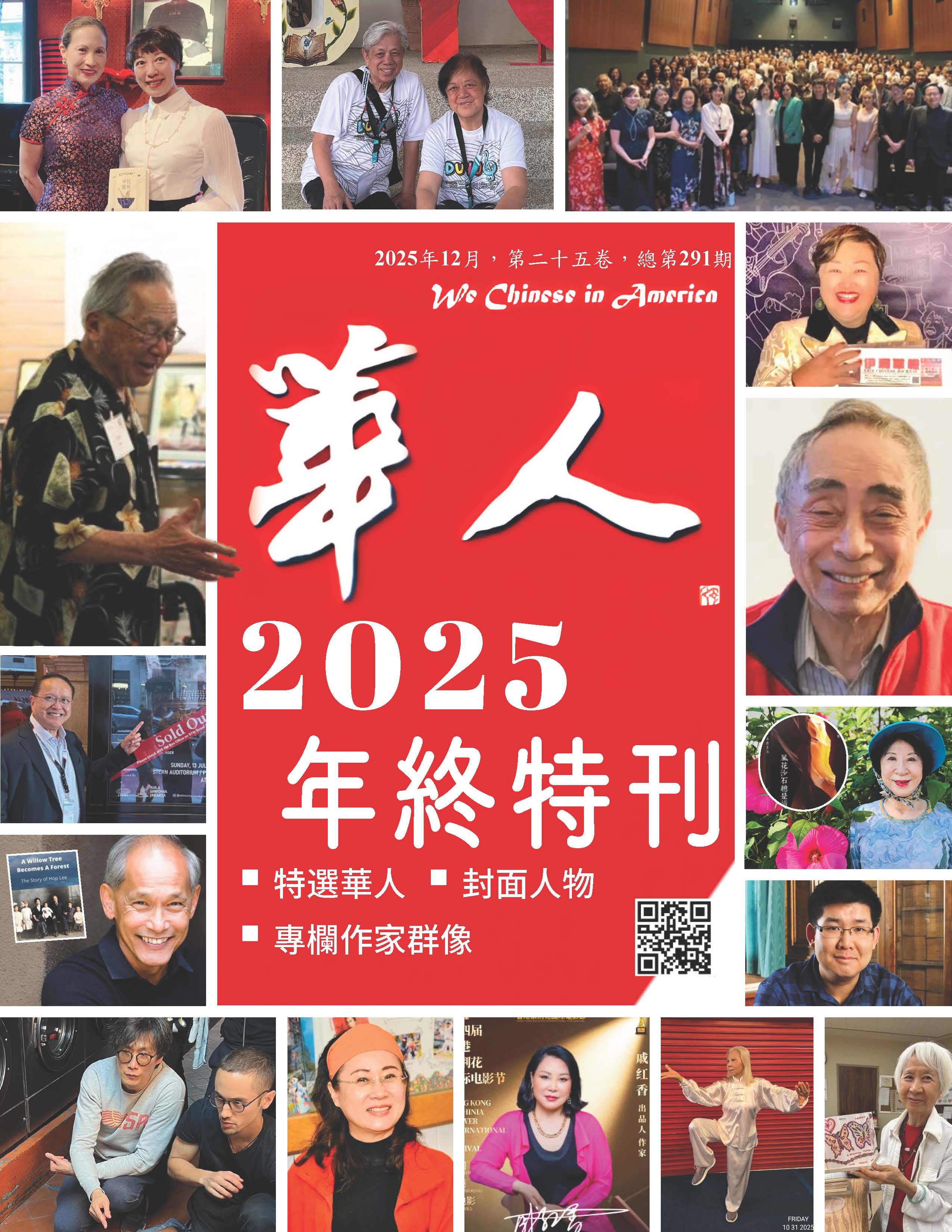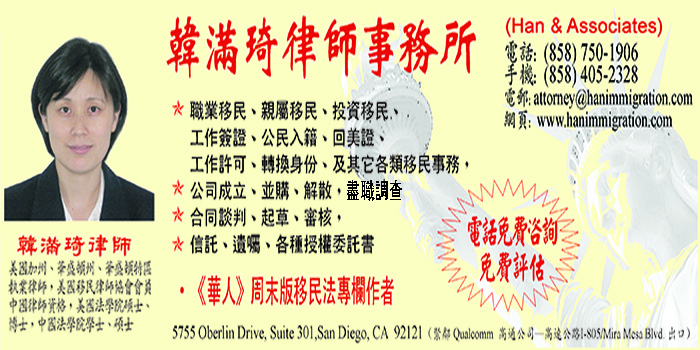By LILLY CHENG
May is the Asian American and Pacific Islander Heritage Month in the United States. On the 17th of May in 2025, a documentary entitled “Valor and Memory” was aired at the University of Nevada, Las Vegas. Directed by three time Emmy winner, Mr. Bill Einreinhofer and co-produced by Min Zhou, this hour long documentary detailed the three groups of volunteer pilots forming what we know as the Flying Tigers: “Flying Tigers”, “Chinese Tigers”, and “Chinese-American Tigers”. With a wide range of historical accounts and documentations, and having only a few survivors, many people only have a vague idea about this group of brave volunteers, and this documentary helped bring to life the legendary Flying Tigers, and its core leadership: General Claire Lee Chennault.
On April 19th, 2025, San Diego State University’s Chinese Cultural Center, in collaboration with the San Diego Chinese Cultural Museum, hosted a conference entitled "China Burma India Theater : World War II ‘s Forgotten Theater”, featuring Major General William Chen and Dr. Cynthia Chennault. Focusing on the contributions of Chinese Americans and the Flying Tigers under the command of General Chennault, this conference serves as the prelude for our story of the Flying Tigers on this issue of We Chinese in America.
This issue’s title person is Cynthia Chennault, daughter of General Claire Lee Chennault. Her Chinese name, 陳美麗, was given to her by Madame MeiLing Soong Chiang. Named with the character “美” (beauty), Dr. Cynthia Chennault’s first name, 美麗, stands apart from many others.
Cynthia Louise Chennault, Chinese name 陳美麗, was born in Hongkong in the year 1950. Daughter of General Claire Lee Chennault, best known as the commanding officer of the Flying Tigers, and Anna Chan Chennault, a renowned Chinese American journalist and political activist, Dr. Chennault is an outstanding scholar in Early Chinese literature and culture. After her graduation from Stanford University, Dr. Chennault taught at The University of Florida as an associate professor in the Department of Languages, Literatures,and Cultures until her retirement in 2018. Her research focused on Chinese poetry and social history during the Six Dynasties and early Tang (4th through 7th centuries), as well as contexts of new themes and genres. Having co-edited Early Medieval Chinese Texts: A Bibliographical Guide, Dr. Chenault’s work has been published in many influential journals such as T’oung Pao, Delos, and The Journal of Asian Studies.
Outside of her scholarly works, Dr. Chennault is an active participant in the conservation efforts relating to the contributions General Claire Lee Chennault made for US - China relations during World War Two. During the 4th Sino-American Second World War Friendship and Flying Tiger History Conference, Dr. Cynthia shared first-hand accounts and historical memorials of his father’s work cooperating with Chinese Pilots during the Second Sino-Japanese War. In fulfilling her hopes to foster cross-cultural understandings and pass down important historical memories, Dr. Cynthia’s career exemplifies both academic excellence and devotion to public service.
General Claire Chennault commanded the Flying Tigers, and later the 14th Air Force, as one of the major air force elements in the war effort against the Japanese in China during World War Two. From that, Dr. Chennault derived a sense of duty to help foster a connection between the nations and cultures. Her mother, Anna Chan Chennault, who came to be known as the Civilian Ambassador for US - China Relations, was an active advocate for peace and cooperation between China and the United States until her passing in 2018.
Dr. Chennault is currently retired from her work at the University of Florida. Travelling between Florida and Washington D.C on a monthly basis, she lives in an apartment on the top floor of the Watergate Complex. In 1967, Anna Chennault moved into the Watergate Complex (best known for the Watergate Scandal during the 1970s). Surrounded by influential figures in the world of politics and foreign relationships. With their specialized menu items, the parties she hosted are very well known, often amassing over 100 guests and attendees. As such, her residence became a gathering place for political and social elites, and Anna Chennault, as a socialite, became known as “the next Perle Mesta”. Taking her time to organize the story of her parents, Dr. Chennault often travels between her office on Pennsylvania Avenue and the apartment in Watergate Complex to archive and sort many valuable historical accounts of the Flying Tigers and other important materials.
On April 23rd, 2025, I had the opportunity to meet and have a pleasant chat with Dr. Cynthia. Since the acronym for Civil Air Transport is CAT, I would refer to her as “CAT Lady”. We became great friends, and I got to learn about the exceptional life of her and her parents, and we are hoping to meet in person in Washington DC in November of 2025. Below are the manuscripts of our conversation.
◆. Can you share with me your academic experiences?
Since I was little, I have had a liking for poetry, and by the time I was in high school, I was fully engrossed in them. Following my passion, I ended up attending Wellesley College as an English Literature major.
During my Junior year, I stumbled upon a book by James J. Y. Liu, titled The Art of Chinese Poetry. This book opened my eyes to the realm of Chinese poetry, as it went in depth to describe the comparative differences between Chinese and English poetry through an abundance of examples. For instance, the works of Romantic poet William Wordsworth, often discusses the serenity and tranquility of nature, however, their underlying reflection upon humanity’s place in nature is fundamentally different from the Chinese Shanhui poetry traditions. After reading this book, I decided to apply to Stanford University for my graduate work, hoping to study with Professor James J. Y. Liu. Unfortunately, I was accepted into every other university I applied to except for Stanford.
After discussing with my mother, I decided to attend UC Berkeley, since I can take joint courses at Stanford. However, because of the protests happening on the campus of Berkley, my mother wasn’t very supportive of this motion. In the end, I went to Berkeley and sat in on my classes at Stanford, which allowed me to learn from Professor Liu despite not being a student at Stanford.
Through the upper level master courses I took with Professor Liu at Stanford, we became more familiar. He liked how seriously I treated my studies, and how focused and hardworking of a student I was. As such, when I completed my Masters and once again applied for East Asian Literature at Stanford, I was accepted. This experience taught me the importance of perseverance: that I shouldn’t be afraid because of a failure at first but simply try again when the next opportunity surfaces.
Dr. Liu’s research focuses around literature of the Tang and Song dynasty, but I told him that I was more interested in the poetries of the Six Dynasties, and that I want to focus on researching this area since there were already a good number of students doing research on the Tang Dynasty. I am very grateful for the encouragement he gave me to pursue my field of interest. I was very lucky to have such a great professor who taught me a lot about literature, as well as informing me of how I should teach in my own practice: by encouraging students, and prompting them to learn more about traditional Chinese culture and literature.
One of my most important and also my most recent piece of scholarship was accepted in section 28 in The Cambridge History of China, published by the Cambridge University Press.
◆.How do you feel about being a child of multiple ethnicity?
Because of my mixed heritage, I have a pretty 50/50 perspective on everything. When my mother married General Chennault and came to the United States, she was awed by the entirely different cultures and social structures.
I can share with you a story that a friend of my mother once told me. My mother used to go to a country club in the town of Monroe. Once, my mother was talking with the people about family business, complaining about how naughty her daughters were, and how her husband wasn’t of any help, which led to some blabbering about General Chennault. It was then that a friend of hers, the wife of a state governor back in the day, told my mother that it was inappropriate to talk down to my father in public because he is the hero of his hometown, and people view him as a role model, thus making the small talk inappropriate. Since then, my mother never rambled like this again.
◆. Can you tell me more about your mother?
My mom was really busy when I was young. I wasn’t much younger than my sister, who was often ill and quite frail. My mother thought that she couldn’t take care of both well with how busy she was, so I was cared for mostly by my grandmother and aunts. A couple of aunties took care of me before I was two years old, and the grandma who took care of me was actually the second wife of my great grandfather, rather than my mother’s mother.
My mother’s relationship with language is also quite complicated. She grew up speaking Cantonese, but because she lived in Beijing during the 1940s with her parents, she also learned to speak Mandarin. Later on, she and her sisters studied at a Board School in Hongkong, which allowed her to learn English as well. After she came to the United States, my mother found a job working on a translation project at Georgetown University, where she helped to edit a dictionary.
One time, I asked my mother: “You wear all of your jewelry and dress so nicely to work everyday, why would you do that if it was just work?”. She replied to me that, because a lot of people in society look down on Chinese women, she has to help combat the stereotypes by dressing herself well and presenting herself in the best way possible.
Because of how influential my mother was in shaping who I am today, I feel that it is important for me to detail her stories, and how those experiences shaped me as a person.
◆. Can you share with us more about General William Chen?
General William Chen is an important figure in enabling Chinese American veterans to receive national recognition for their contributions. He is well respected within the Chinese American communities. As the first Chinese American to reach the rank of Major General, he worked tirelessly to award the symbolic Congressional Gold Medal to Chinese American veterans who fought in World War Two. General Chen is also the Chairman of the CAT Association.
His father, Moon Chen, was an assistant for my father in the 14th Air Force, who also joined the CAT Association after the war. Much of the ground transportation capacities were damaged because of the war, which prevented much needed supplies from reaching inland once they arrived in Shanghai, as such, Americans formed aviation teams to help transport them, which later became the CAT Association.
◆. Can you talk about the Chennault Council for International Cooperation?
Chennault Council for International Cooperation is a nonprofit organization based in Washington D.C. I would travel there monthly to work with them in their office on Pennsylvania Avenue, which has a lot of documents stored. I hired two people to help me organize some of the official documents from World War Two, as well as some documents about my father before the war, however, I haven’t found anyone to help with my mother’s part yet. The husband of the couple who is helping me with my work knows a lot about China, Myanmar, and India, since his father was a pilot in the China National Aviation Corporation (CNAC). The company was founded in the 1930s, and had both Chinese and American pilots. It is to be noted that CNAC is the first corporation to fly the Burma Hump to deliver military supplies. There was also the founding of Civil Air Transport (CAT), which is another important piece of history that needs to be documented. Even until now, a lot of people who are associated with CAT would gather from time to time, which lead to the formation of an association with periodical meetings to commemorate this important historical moment.
◆. Can you tell us more about your work in Washington DC?
There are a lot of documents and files about my parents that I need to sort through, categorize, and organize. Catherine Forslund, a professor who studies history, wrote her Ph.D thesis on my mother’s professional career. She is really interested in my mother’s historical role in the US - China relations, she even published her research into a book titled Anna Chennault: Informal Diplomacy and Asian Politics. I might still be available for purchase online. I hope to go above and beyond that, making an even better archive on my parent’s life stories.
My mother was also friends with J. Edgar Hoover, who gave her a signed copy of his recipe cookbook, but we later learned that he was listening in on communications between my mother and the outside world with a bug he planted, I guess that’s just the way politics is.
Anna Chennault (6/23/1925 - 3/30/2018)陳香梅
A great task of our times: Bridging the dialogue for US - China Relations
Mrs. Anna Chennault was an exceptional female pioneer who represents a connection between Eastern and Western Culture. Her service as a war correspondent, widow of a General, a woman in politics, or in bridging eastern and western culture, all exemplified her personal charisma that were so desperately needed during her times. Her life stories served as a testament both to the political turmoils of the twentieth century, as well as the rise in female representation on the world stage.
Early Life and Education
Anna Chenault was born in a well educated household. At the time, her father worked in the United States, and her mother passed away when Anna Chennault was sixteen years old in Hongkong. Against the wishes of her parents, who hoped her and her sisters would continue their education in America, Anna Chennault stayed in China. She demonstrated a deep interest in language and writing while she studied foreign languages at the National Central University in Chongqing. During World War Two, she worked as a journalist for Associated Press and Central Daily News, reporting on the Sino-Japanese War and Chinese war efforts as one of the few female war correspondents at the time. Her fluency in both Chinese and English helped to set a foundation for her future international activities.
Marriage with General Claire Lee Chennault
Because of her fluency in English, Anna Chennault was dispatched to interview the commander of the Flying Tigers, General Chennault, whom she fell in love with at first sight. General Chennault was the only American General who participated throughout the entire Second Sino-Japanese War, and the Flying Tigers as well as the 14th Air Force he commanded during the war were of important service to the Chinese war efforts against Japanese invaders. In addition to protecting the airspace of Chinese cities against Japanese bombing, the aviators under him were also tasked with flying The Hump to deliver crucial military equipment and supplies to China, which was the only major route for the allies to supply China left following the loss of harbors, railways, and other land routes.
Political activism and the Chennault Affair
During the 1960s, Anna Chennault was very active in the Republican sphere of influence, becoming one of the few Chinese American women involved in politics. She had close relationships with numerous American presidents (such as Nixon and Reagan). It had been rumored that, during the 1968 election, she had secretly intervened to make the South Vietnam government delay their efforts on peace negotiations for the Vietnam War in order to influence the outcome of the election. This incident became known as the Chennault Affair. Though it is still debated to this day, some scholars who believe in this incident see it as an instance of political intervention that shaped the international political landscape. Anna Chennault followed her principle to participate in politics but never as the cabinet member of any political figure, and as such mostly took up payless roles. Starting with John F. Kennedy, her work continued until Clinton’s presidency, making her the most influential Chinese American woman in politics.
Literary and Cultural contributions
Anna Chennault was also an accomplished writer, having written multiple biographies and works of non-fiction on accounts of her personal experiences with historical events, such as “我與飛虎隊”, ”香梅與世界”, and “東風西風”. She worked tirelessly in promoting cultural exchange between China and the United States, founding the China - US Culture Foundation, and gave speeches globally, advocating for peace and mutual understanding.
Social Service and Honors
Anna Chennault was the first Chinese American woman to be appointed to a presidential advisory committee, having served as the Chairwoman of U.S. Small Business Administration’s advisory committee and a Republican national committee woman representing the District of Columbia. She has been awarded numerous honorary doctorate degrees, as well as medals in recognition of her social service. She was also an active philanthropist who cares deeply about the treatment of the Chinese American communities, who continues to be a pioneering figure for Chinese American women.
Later life and afterlife
During her later life, Anna Chennault lived in Washington, still actively participating in politics and cultural exchanges. As a rare instance of female Chinese American participation in politics, she became known as the “Bridge between United States and China”. In recognition of her service, mournings from both Chinese and American media came when she passed away in 2018.
Major General Claire Lee Chennault 陳納德將軍 (9/6/1893 - 7/27/1958)
Dr. Chennault told us that the history of the Flying Tigers serves as a testament to its great success that stemmed from mutual friendship, respect, and cooperation. This experience was invaluable for her father, Dr. Chennault stated, “this [General Chennault’s service in China] changed his life. Though he had never been to China before, in just a few short months, he grew a deep sense of respect for the Chinese people, their courage, and their resilience in such difficult situations.”
When her father passed away in 1958, Dr. Chennault was only eight years old. In the eyes of his daughter, General Chennault is a kind and loving father, who seldom mentions his experiences during the war. For her, participating in memorials for the Flying Tigers is another way to explore the story of her father. Recounting her experience visiting Mainland China for the first time back in 1981, she told reporters that “when I talked with locals on the street, many of them remembered that era, some mentioned how their families helped to build the runway for the aviators. She was pleasantly surprised by that, and she was encouraged by the increase in Flying Tiger themed memorials and museums, which she believes to be “very positive”, as this serves as a testament to public recognition of the historical importance of the Flying Tigers. Taking pride in the fact that the Flying Tigers “continues to be a symbol of China-US friendship”, Dr. Chennault is confident in the continuation of such friendship as people gain more mutual understanding.
General Chennault and the Flying Tigers: humble beginnings of an aviation legend
Born in Louisiana, General Claire Lee Chennault was a skilled aero-warfare tactician with great foresight, serving as the Chief of the Pursuit Section at the Tactical School. In 1937, he travelled to China as an advisor to assist in training fighter pilots, helping to establish the combat doctrine for the Chinese Airforce of flexible maneuvering. In 1941, as the fighting in China intensified, General Chennault established the American Volunteer Group following an invitation by Chiang Kai-Shek. This group of volunteer pilots is what later became known as the Flying Tigers. Made up of 100 pilots, roughly 200 maintenance crew, auxiliary personnel, and dozens of training staff, the Flying Tigers fielded P-40 Warhawks with sharkmouth-like paints on the nose of their planes. From December of 1941 to July of 1942, the unit shot down upwards of 296 Japanese aircraft, while only losing 14 pilots, which reduced Japanese air superiority, raising the morale of Chinese military and civilians alike. This in turn established a historical basis for cooperations between China and the United States..
Continuation of the Flying Tiger Spirit: From the Chinese front to the skies of The Hump
After the disbanding of the Flying Tigers in 1942, General Chennault assumed command of the 14th Air Force and continued providing air support in the Chinese theater. At the same time, in order to break the Japanese blockade of transportation into China by the Allies, The Humps was activated for supply run tasking. Planes carrying valuable military supplies would take off from Assam, India, fly across the Himalayan mountains and land in Kunming. Against the extreme weather conditions, dangerous landscapes, threat imposed by Japanese interception, and extended high altitude flying, the Allies flew over 65000 sorties, delivering over 650000 Tons of strategic supplies including fuel, ammunitions, medicine, and plane parts, making it a key element in the Chinese war effort. Chennault’s 14th Air Force also flew escort for these missions, which is a showcase of the spirit of the Flying Tigers in other areas.
A break in history: the legend of the freedom defender
After the war, Chennault founded the Civil Air Transportation Inc. (CAT) with Whiting Willauer in Shanghai, which later moved to Taiwan in 1949. Having cooperated with the CIA during the 1950s, the company was rebranded as Air America in 1959. Air America was an active component during the Cold War, flying high-risk intel and rescue missions in Vietnam, Laos, and Cambodia. Although General Chennault passed away from his illness in 1958 at the age of 64, the Flying Tiger spirit that he made into reality became a symbol of cooperation, freedom, and unity even after his death.illness in 1958 at the age of 64, the Flying Tiger spirit that he made into reality became a symbol of cooperation, freedom, and unity even after his death.
(劉麗容)
五月是美國亞太裔傳統月,在內華達拉斯維加斯的內華達大學2025年5月17號下午有一個電影紀錄片欣賞及討論的節目,這部電影名叫《Valor and Memory(勇氣及回憶)》,由得到艾美獎三次的Bill Einreinhofer 先生導演、華裔導演周敏製片。




